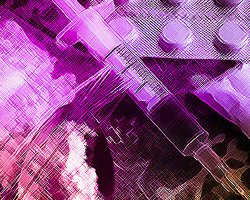For Healthy Babies, Avoidance of ALL Possible Drug Use Is Paramount

It seems like such a fact would almost go without saying: babies born to drug- and alcohol-free women are healthier.
Still, hundreds of thousands of women expose their children to either illicit drugs or alcohol.
While survey results on this point vary, it appears that as many as 400,000 babies are born each year to illicit-drug-using women. And ten percent of pregnant women surveyed by the Centers for Disease Control and Prevention reported that they consumed alcohol and 3% engaged in binge drinking.
The reasons these women continue to use drugs or drink during pregnancy vary. Some women don’t feel they have a choice because their cravings drive them back to alcohol or drug consumption. Other women don’t even know they are pregnant when they are getting high or drunk.
One young woman who had just completed rehab told me the story of how she lost her baby because of her drug use.
She was working as a stripper to support her addiction to OxyContin. Bleeding and pain sent her to an emergency room and that’s when she first learned she was pregnant.
She described her emotions as she sat in the cold ER, waiting for medical staff to tell her that her baby had died.
Entirely alone and distraught, she endured multiple blood tests intended to measure hormonal changes that would indicate the death of the fetus. There was nothing she could do but wait for her baby’s death and regret the decisions that had led her to this point in her life.
When the ordeal was over, she called her mother from whom she had long been estranged and begged for help. Her family sent her to a Narconon facility.
Let’s take a look at just how damaging different drugs can be to a baby or its mother.
Effects of Opioids During Pregnancy
It’s pretty well known by now that a baby born to an opioid-addicted mother can suffer greatly from the sudden absence of these drugs in their bloodstream. The baby’s condition is called Neonatal Abstinence Syndrome or NAS. Babies suffering from NAS often require long hospital stays after birth. They may need to be gradually weaned off the opioids they were exposed to. During this treatment, they experience symptoms like trembling, vomiting, diarrhea, seizures and inconsolable crying.
The average cost of this hospital stay is over $566,000, It can cost upwards of $60,000 to treat one baby, according to the National Institute on Drug Abuse.
As painkiller and heroin use has increased, the number of babies suffering from NAS increased five-fold between 2000 and 2012. According to one 2017 news report, a baby suffering from NAS is born every half-hour.
In addition, opioid use during pregnancy is associated with:
- Poor fetal growth
- Premature birth
- Congenital heart defects
- Clubfoot
- Respiratory defects
- Genital or urinary defects
- Cleft lip or palate
- Spina bifida
- Miscarriage
Effects of Marijuana During Pregnancy

Whenever a pregnant woman uses drugs or drinks, the toxic substances she consumes pass through the placenta to her baby.
With THC, for example, this fat-loving molecule rapidly passes through the placenta into the baby’s body. The baby’s body can measure doses of THC at 10% of the level of the mother.
It can take 30 days for THC to be cleared from the body and there are some signs that indicate that THC can be stored for much longer than that.
After alcohol, marijuana is the most frequently used drug among pregnant women, with some surveys finding that as many as 5% of pregnant women use this drug. Among a very specific group of pregnant women— young, urban, socioeconomically disadvantaged women—the rate of marijuana use increases to 15–28%.
What effects could result from a mother’s marijuana use during pregnancy?
According to the American College of Obstetrics and Gynecology:
- Decreased attention span
- Behavioral problems
- Poorer performance on tests that measure coordination between vision and physical movements or solving visual problems
- Reduced growth resulting in smaller overall length, head size and body weight
- Reading and spelling problems in school
- Lower ability to reason
- More likely to be fearful and impulsive
- Possible slight increase in stillbirth
Some of these risks were increased when the mother consumed more of the drug.
Use of marijuana by the expectant mother is also a predictor of marijuana use by the time the child is 14 years old and may prime the child for addictive behavior in general.
Despite the ready availability of this information, a Colorado survey showed that more than 31% of women felt that using marijuana during pregnancy posed no risk at all, and nearly 39% thought that there was only a slight risk.
Effects of Cocaine During Pregnancy
Women who use cocaine during pregnancy have a greater risk of creating these effects on their babies:
- Significantly reduced weight, length and head size
- Miscarriage
- Premature or difficult delivery
- Deficits in information processing or sustained attention to tasks
- Changes in brain function that persist into a child’s teenage years
- Heart defects and malfunctions
- Difficulty feeding
- Increased number of illnesses in the first year
- Stroke experienced by the newborn when mothers used cocaine shortly before birth
- Seizures
Effects of Alcohol Use During Pregnancy
As with opioid use, the subject of alcohol use during pregnancy has received widespread media coverage. The most well-documented effect of alcohol consumption during pregnancy is Fetal Alcohol Spectrum Disorder or FASD.
There’s a wide range of symptoms marking this disorder, and one child diagnosed with FASD may have an entirely different set of symptoms than another. The symptoms can range from disabling to a manifestation so mild, they escape diagnosis. Some signs are physical and others are mental and developmental. These signs include:
- Abnormal facial features including smoothing or flattening of some parts of the face
- Small head size and reduced height and weight
- Poor coordination
- Difficulty in school and learning disabilities, especially related to language and math
- Poor memory
- Poor speech skills
- Low IQ
- Vision or hearing problems
- Defects in heart, kidneys or bones
One study of the costs associated with the extra care required by youth or adults diagnosed with FASD found that youth typically incurred additional costs of $22,810 and adults incurred additional costs of $24,308. FASD can be so severe that a person may need to be cared for in an institution which would mean costs are even higher than these averages.
Effects of Methamphetamine Use During Pregnancy
Methamphetamine is an extremely harsh, toxic drug. Meth users lose their appetites and are artificially energized by the drug, meaning that they may stay up for days if they have enough of the drug on hand. Meth-using mothers are also unlikely to eat well or generally take good care of themselves, which increases the risks to their babies beyond the effect of the toxic drug alone.
Use of methamphetamine and similar stimulants was associated with the following adverse effects on babies and mothers:
- Higher rates of preeclampsia (high blood pressure during pregnancy that causes organ damage and can be fatal for both mother and baby)
- Separation of the placenta from the uterus before birth
- Preterm delivery
- A higher rate of maternal injuries and mortality
The conclusion you might draw from all this information is so very, very simple. If you are pregnant, for your own health and the optimal health of your baby, please avoid the use of any alcohol or drugs.
This information also points out the wisdom of helping any woman of child-bearing age find sobriety if they are using or addicted to drugs.
Truly, the health of our next generation depends on it.


 ®
®